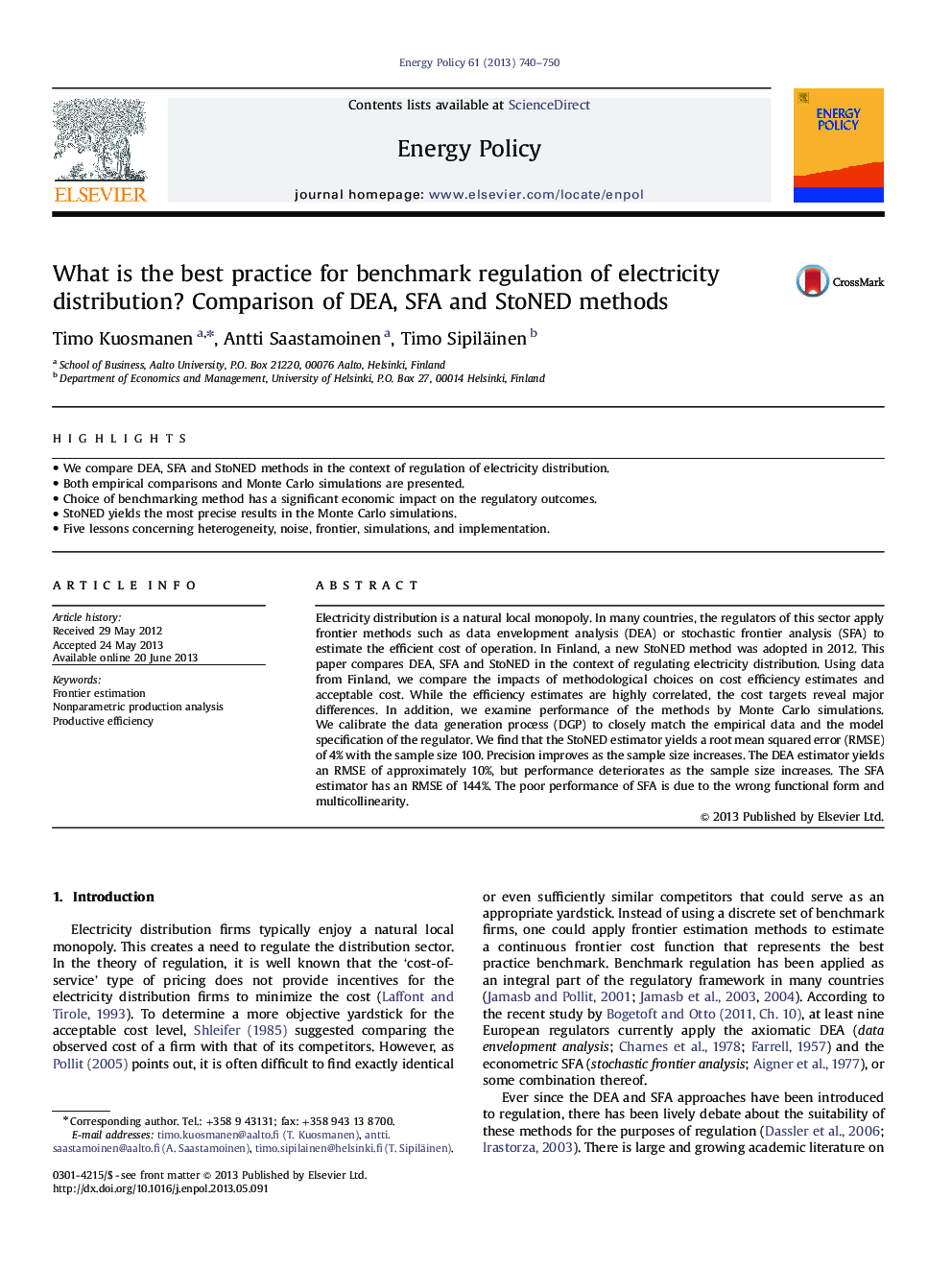| Article ID | Journal | Published Year | Pages | File Type |
|---|---|---|---|---|
| 7404859 | Energy Policy | 2013 | 11 Pages |
Abstract
Electricity distribution is a natural local monopoly. In many countries, the regulators of this sector apply frontier methods such as data envelopment analysis (DEA) or stochastic frontier analysis (SFA) to estimate the efficient cost of operation. In Finland, a new StoNED method was adopted in 2012. This paper compares DEA, SFA and StoNED in the context of regulating electricity distribution. Using data from Finland, we compare the impacts of methodological choices on cost efficiency estimates and acceptable cost. While the efficiency estimates are highly correlated, the cost targets reveal major differences. In addition, we examine performance of the methods by Monte Carlo simulations. We calibrate the data generation process (DGP) to closely match the empirical data and the model specification of the regulator. We find that the StoNED estimator yields a root mean squared error (RMSE) of 4% with the sample size 100. Precision improves as the sample size increases. The DEA estimator yields an RMSE of approximately 10%, but performance deteriorates as the sample size increases. The SFA estimator has an RMSE of 144%. The poor performance of SFA is due to the wrong functional form and multicollinearity.
Related Topics
Physical Sciences and Engineering
Energy
Energy Engineering and Power Technology
Authors
Timo Kuosmanen, Antti Saastamoinen, Timo Sipiläinen,
